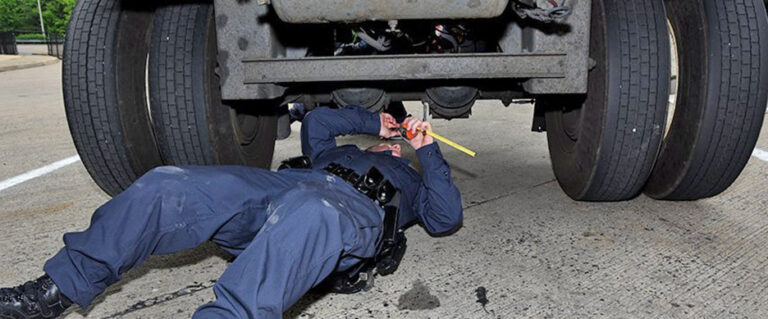WASHINGTON — The Commercial Vehicle Safety Alliance (CVSA) has announced Aug. 21-27 as the dates for this year’s Brake Safety Week.
Brake Safety Week is an annual commercial motor vehicle brake-safety inspection, enforcement and education initiative conducted by law enforcement jurisdictions in Canada, Mexico and the U.S.
During Brake Safety Week, inspectors will conduct their usual North American Standard Level I and V Inspections and capture and report brake-related data to CVSA.
The results will be released in the fall.
Commercial motor vehicle inspectors in Canada, Mexico and the U.S. inspected 35,764 commercial motor vehicles during last year’s event.
In Canada, 1,903 commercial motor vehicles were inspected last year. The brake-related out-of-service rate was 15.4%. The out-of-service rate related to brakes in the U.S. was 13.5% out of the 28,694 commercial motor vehicles inspected. And in Mexico, 5,167 inspections were conducted with a brake-specific out-of-service rate of 2.6%.
Combined, for a North American total, 35,764 commercial motor vehicles were inspected last year. Twelve percent of those vehicles were restricted from travel because inspectors found brake-related critical vehicle inspection item conditions and placed those vehicles out of service, using CVSA’s North American Standard Out-of-Service Criteria.
That also means that 88% of the commercial motor vehicles inspected throughout North America during Brake Safety Week did not have brake-related critical vehicle inspection item violations.
Brake-related violations comprise the largest percentage of all out-of-service vehicle violations cited during roadside inspections, according to the CVSA.
According to last year’s three-day International Roadcheck data, brake systems and brake adjustment violations accounted for 38.9% of all vehicle out-of-service violations, the most of any category of vehicle violations.
To address this, CVSA’s Brake Safety Week seeks to:
- Identify and remove commercial motor vehicles with critical vehicle inspection violation items identified in the North American Standard Out-of-Service Criteria from roadways;
- Conduct inspections and identify and acknowledge commercial motor vehicles that do not have critical vehicle inspection violations by affixing those vehicles with a CVSA decal;
- Encourage proactive vehicle maintenance in advance of the week;
- Highlight the hard work and commitment to safety by inspectors, drivers and motor carriers;
- Remind drivers and motor carriers about the importance of proper brake maintenance and vehicle pre-trip and post-trip inspections; and
- Provide an opportunity for outreach and educational brake-safety efforts by inspectors.
“During the brake portion of a vehicle inspection, inspectors will look for missing, non-functioning, loose, contaminated or cracked parts on the brake system, and non-manufactured holes (such as rust holes and holes created by rubbing or friction) and broken springs in the spring brake housing section of the parking brake,” a CVSA news release stated.
“They will listen for audible air leaks around brake components and lines, and ensure the air system maintains air pressure between 90-100 psi (620-690 kPa). Inspectors will also check for S-cam flip-over and measure pushrod travel. They will check that slack adjusters are the same length (from center of S-cam to center of clevis pin) and the air chambers on each axle are the same size. They will also inspect required brake-system warning devices, such as ABS malfunction lamp(s) and low air-pressure warning devices. In addition, inspectors will ensure the breakaway system is operable on the trailer, and inspect the tractor protection system, including the bleed-back system on the trailer.”
In addition to reporting total inspections and brake-related out-of-service violations, inspectors will also capture and provide data on brake hose/tubing chafing violations – the focus area for this year’s Brake Safety Week.
“Poorly maintained brake systems can reduce the braking capacity and stopping distance of large trucks and motorcoaches, which poses a serious risk to driver and public safety,” said CVSA President Captain John Broers with the South Dakota Highway Patrol. “In those split-second emergency situations, the proper functionality of the brake systems on large commercial motor vehicles is crucial.”
The Trucker News Staff produces engaging content for not only TheTrucker.com, but also The Trucker Newspaper, which has been serving the trucking industry for more than 30 years. With a focus on drivers, the Trucker News Staff aims to provide relevant, objective content pertaining to the trucking segment of the transportation industry. The Trucker News Staff is based in Little Rock, Arkansas.















